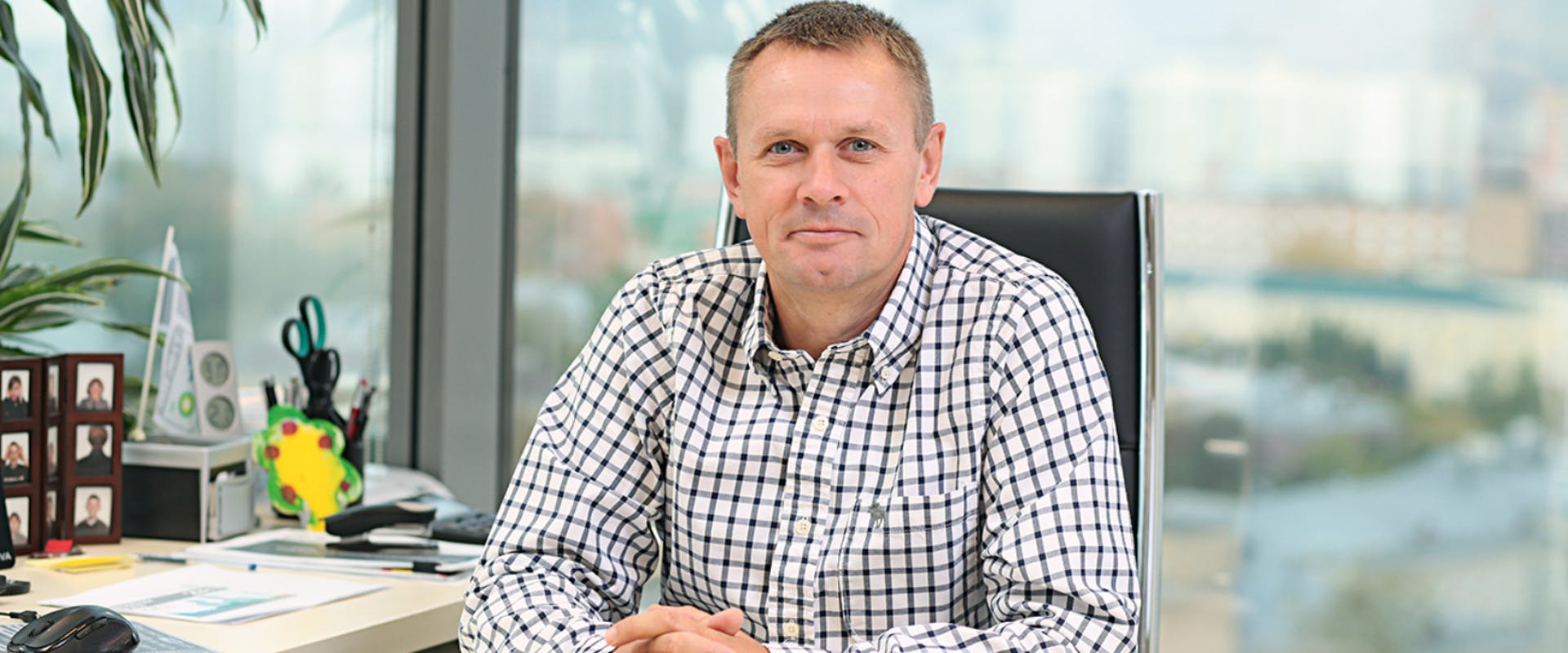Chris - Spotlight Story

Can you tell us a bit about your career?
I’m a geophysicist by background and have worked in the oil and gas industry for almost 40 years, around 26 of them for bp. I started out as a seismic interpreter and climbed the ranks through the exploration business, working on and offshore. Then in the early 2000s, I got the chance to go to Russia with TNK-BP, where there was a lot of onshore seismic work carried out by contractors. After a few years, I was approached by one of them who wanted me to help them improve their safety record – they’d had eight fatalities in 12 months. During the three years I was there, we had just one fatality and that was in my first three months. It taught me a lot about safety, operational performance and the specific challenges around land seismic. After that, I returned to TNK-BP and later Rosneft.
Is that where you came across STRYDE?
Yes, at the time it was called the Cheetah development project. Rosneft was approached by bp to take part and I could see straight away its potential for Russian seismic. Not just in terms of safety and efficiency but also cost and environmental impact. One of STRYDE’s biggest benefits is that you can use it in difficult terrains. For example, in Russia we were working in dense forest, which would typically mean having to clear land. STRYDE avoids that impact. It was clear even then that the technology had real commercial potential.
So how did you end up joining STRYDE?
My contract with Rosneft came to an end and Mike [Popham – our co-founder] approached me to see if I would come onboard. I had no hesitation in joining as a consultant.
What does that involve?
A bit of everything – using my knowledge and experience to help develop STRYDE’s product portfolio and talk to potential clients. I get involved in anything from working with developers, helping with planning and field operations to working with the team on the sales and marketing side. I see my job as helping to get the technology and the team over the commercial line.
What does your previous experience in the oil and gas industry bring to STRYDE?
I think it’s about being able to link up my operational understanding of what it takes to conduct land seismic, knowing the challenges our clients face and what they need with STRYDE’s understanding the equipment inside out and its capabilities. There aren’t many people in STRYDE who have been involved in all those aspects and it means I can offer expertise on survey planning and operations and demonstrate to clients that I’ve been in their shoes.
What are your priorities over the next few months?
I think getting some good contracts signed has to be the main priority; we’re talking to a number of companies right now. Then it’s about continuing to work with the team to develop our new Nimble and compact systems and offering guidance where I can.
Why are you so passionate about STRYDE?
Having worked with it myself, I know that this is ground-breaking technology for the onshore seismic industry. Energy companies and their contractors are always having to think about efficiency, environmental impact, and operational cost; STRYDE offers you everything you want from a piece of technology in terms of those three objectives. The other exciting aspect is that this isn’t just about oil and gas. STRYDE’s land receiver technology has all sorts of applications for seismologists in other industries, such as renewables, civil engineering, even waste management. The beauty of it is that our products are flexible and affordable enough for the kind of smaller-scale seismic programmes you tend to find in, say, the geothermal business, but scalable enough to be used in large oil and gas projects.
Having been involved as long as you have, does STRYDE’s success feel quite personal?
I do feel invested but it’s less about the value to me and more about the value our technology offers anyone working in land seismic. I’ve always prided myself on trying to help others and I want to see STRYDE become a commercial success. I find that hands-on aspect as an advisor motivating. I’ve loved having a big input in the development of our new Nimble system. That’s going to help open up more of those opportunities outside of the oil and gas business, which is exciting.
Why do you believe STRYDE has the potential to be a game-changer?
Anyone working in the subsurface needs to be able to visualise it. But I know from my experience that cost is often a limiting factor and that access can be a problem. STRYDE wasn’t the first to develop nodal technology but we’ve managed to bring the costs right down while still enabling clients to shoot higher quality, denser, broader frequency seismic. I think flexibility is key, too. It’s highly unlikely you’re going to persuade a homeowner to let you put a vibroseis truck in their back garden but our system is portable and less intrusive so they may allow you to plant receivers. It opens up all sorts of opportunities to study urban environments.
Why would you encourage firms to come and talk to STRYDE?
It depends a bit on the industry, but if you’re in geothermal, for instance, we can help you plan fast, low-cost surveys that are less environmentally intrusive. Those things are important for oil and gas firms, too, but historically seismic surveys are labour intensive, require specialist infrastructure, like camps, and come with associated safety risks. We can help lower those risks – fewer people and vehicles needed in the field, for example – while delivering better quality data.
You may be interested in other employee spotlight stories...
Click the button below to visit the Our Team page and learn more about the STRYDE team.


